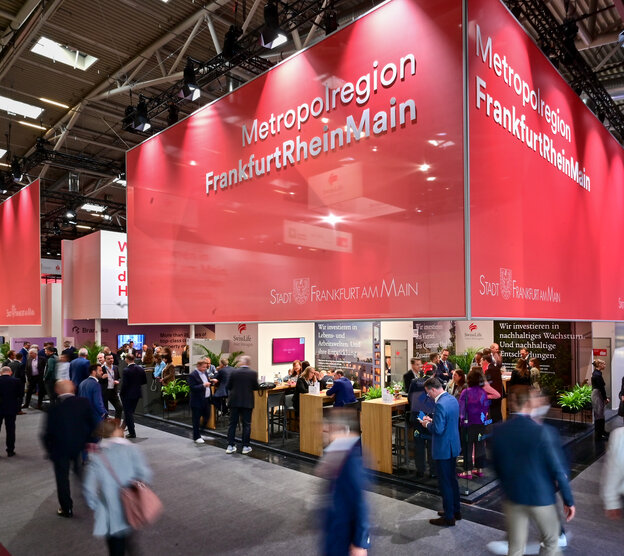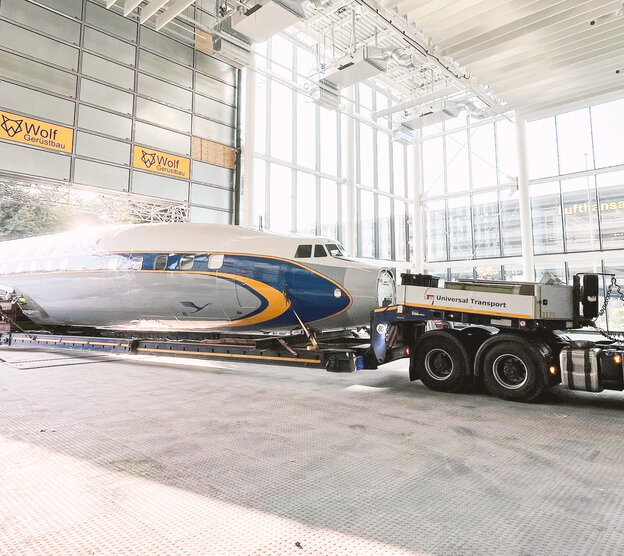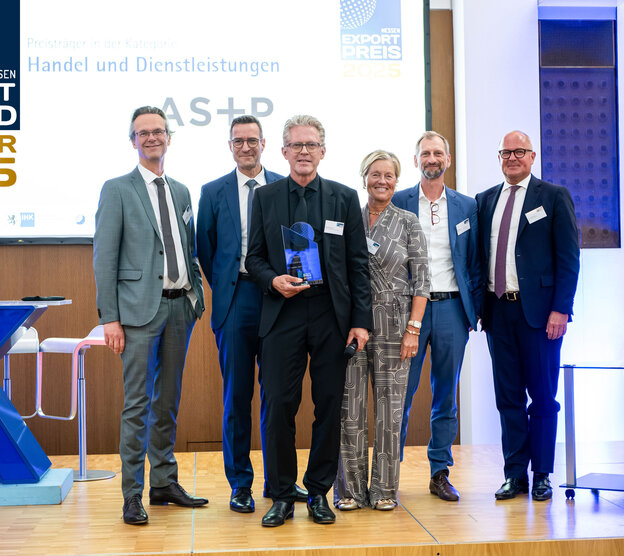AS+P at the German Cultural Days in Riyadh, Saudi Arabia

Exhibition accompanying the Cultural Days in Riyadh: Dr. Rafael Heinisch (Head of the German Embassy’s Culture Department), Jörg Ranau (German Ambassador to the Kingdom of Saudi Arabia) and Tariq Al-Faris (CEO of the ADA). Photo © German Embassy in Riyadh
The opening of four exhibitions by the German Ambassador to Saudi Arabia, Jörg Ranau, at the King Fahad National Library in Riyadh on November 8 heralded the start of the German Cultural Days – a perspective on German-Saudi architecture, art and music, and also a homage to German urban planners who have been working in the Kingdom for decades. In an interview, AS+P Managing Partner Joachim Schares talks about major projects realized and the specific problems of working in a planning area like the Wadi Hanifa.
Architecture, street art, augmented reality and music – the nine-day program of events aims to present the successful synthesis arising from German and Arabian collaboration and, among other things, pays tribute to the German architects, landscape architects and urban planners who have been working in the Kingdom for a good 50 years. For the architecture exhibition, AS+P presented three outstanding projects that serve as examples documenting the more than 40-year success story of the Frankfurt-based firm: the masterplan for the Diplomatic Quarter, the “Action Area Plan for Transit Oriented Development”, and the ensemble of court buildings in the heart of Riyadh.
In an interview given in front of the Cultural Palace in Riyadh, Joachim Schares recalls the masterplan for the “Diplomatic Quarter”, one of the first projects with which AS+P was commissioned by the Arriyadh Development Authority (ADA) back in 1977: “Riyadh is a very dynamic city and its population has doubled in the time I’ve been working in urban planning here. This has led to transport projects being initiated, with many new residential districts and mixed-use developments also springing up. A urban planner working in the Kingdom needs to take into account the harsh climate: The typology of the buildings needs to be aligned according to the direction of the wind, and the buildings need to be planned in such a way that they afford one another the utmost shade. Of course, landscape architecture also plays a major role: Water consumption needs to be kept as minimal as possible. For us planners, these are major challenges, but we know it’s essential to consider such factors.”
The exhibition, which ran from November 8 to 16, presents important buildings, urban planning and landscape architecture and shines a light on German-Saudi cultural exchange, according to Ranau, who is the German Ambassador to the Kingdom of Saudi Arabia and a co-organizer.

AS+P is represented in the exhibition in Riyadh with three major projects: One of the first projects was the masterplan for the Diplomatic Quarter in 1977. Display board © AS+P Albert Speer + Partner GmbH

In 2014, the ADA commissioned AS+P with the urban planning for the public space. The aim was to develop an “Action Area Plan for Transit Oriented Development” for the districts surrounding the new metro stations in Riyadh city center, as well as planning for a central bus station. Display board © AS+P Albert Speer + Partner GmbH

In 2005, AS+P won first prize in the international competition for an almost 49-meter-high court building with gross floor area totaling 57,000 square meters. Display board © AS+P Albert Speer + Partner GmbH


